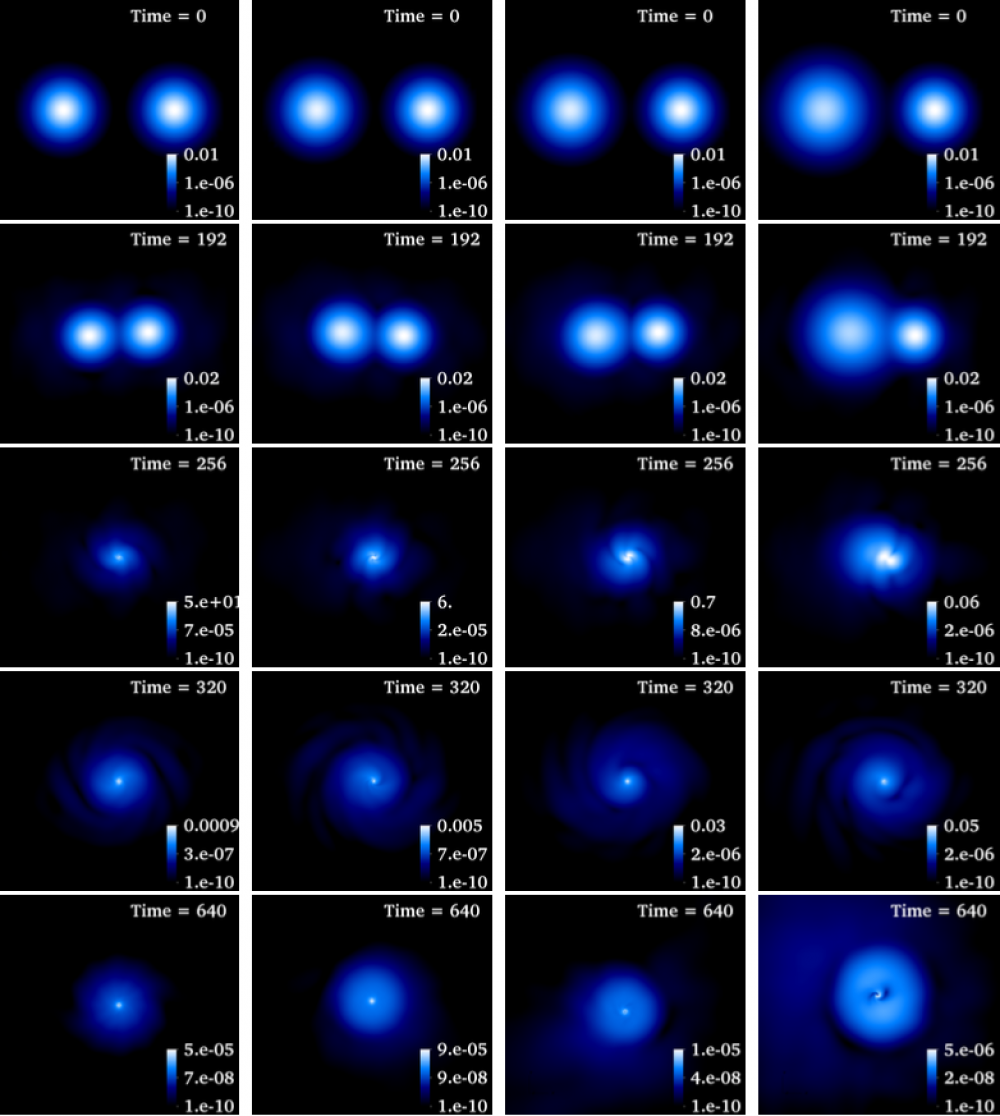The detection of gravitational waves has been one of the most exciting scientific developments of the XXIst century. These detections are theory-driven, they rely on the existence of waveform libraries, which have been constructed for binary black holes and neutron stars. Gr@v members have collaborated on the construction of the first waveform catalogue for exotic compact objects, an effort led by former Gr@v member Nicolas Sanchis Gual (now at the U. Valencia).
Proca stars are hypothetical dark matter lumps [1] [2] [3]. They are a self-gravitating soliton that has been shown to be dynamically robust [4] [5] [6] and can be evolved in binaries, extracting waveforms [7]. In particular it was shown that they can explain in a remarkably good way some of the most massive gravitational wave events, such as GW190521 [8] [9].
In the paper "Impact of the wave-like nature of Proca stars on their gravitational-wave emission" a catalogue that can be used for several purposes comprising about 800 numerical simulations was reported. The following movies show how the corresponding waveforms vary as one varies the initial Proca stars. More details can be found in the paper.
1) Equal mass spinning Proca stars, varying the (equal) frequency of the initial Proca stars:
2) Unequal mass spinning Proca stars, with one star having frequency w=0.8 and varying the frequency of the second star:
3) Unequal mass spinning Proca stars, with one star having frequency w=0.83 and varying the frequency of the second star:
4) Unequal mass spinning Proca stars, with one star having frequency w=0.85 and varying the frequency of the second star:
5) Unequal mass spinning Proca stars, with one star having frequency w=0.87 and varying the frequency of the second star:
6) Unequal mass spinning Proca stars, with one star having frequency w=0.88 and varying the frequency of the second star:
7) Unequal mass spinning Proca stars, with one star having frequency w=0.895 and varying the frequency of the second star:
8) Unequal mass spinning Proca stars, with one star having frequency w=0.910 and varying the frequency of the second star:
9) Unequal mass spinning Proca stars, with one star having frequency w=0.930 and varying the frequency of the second star:
